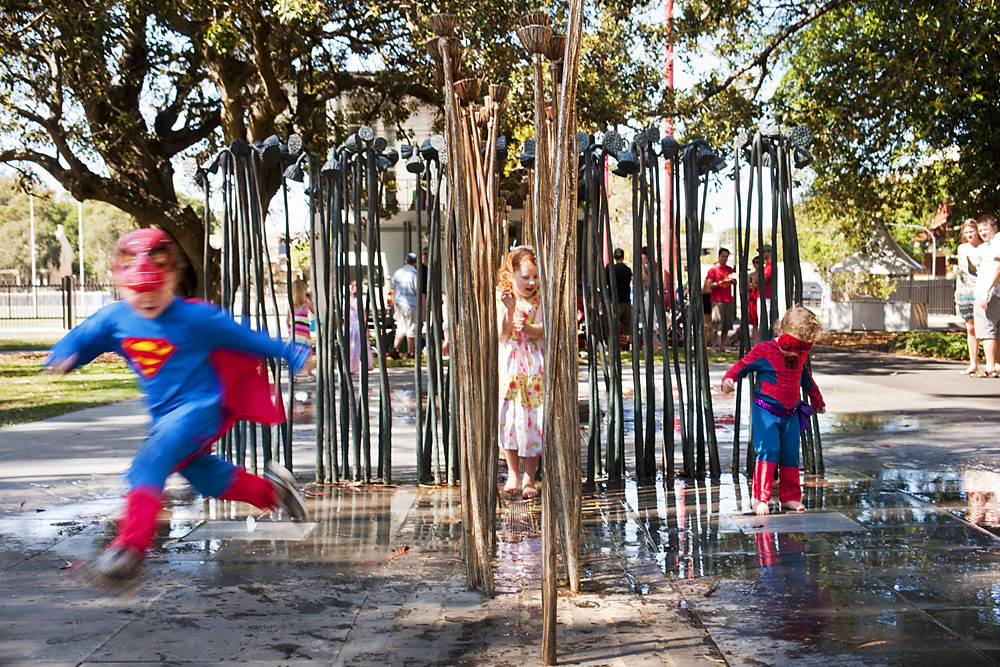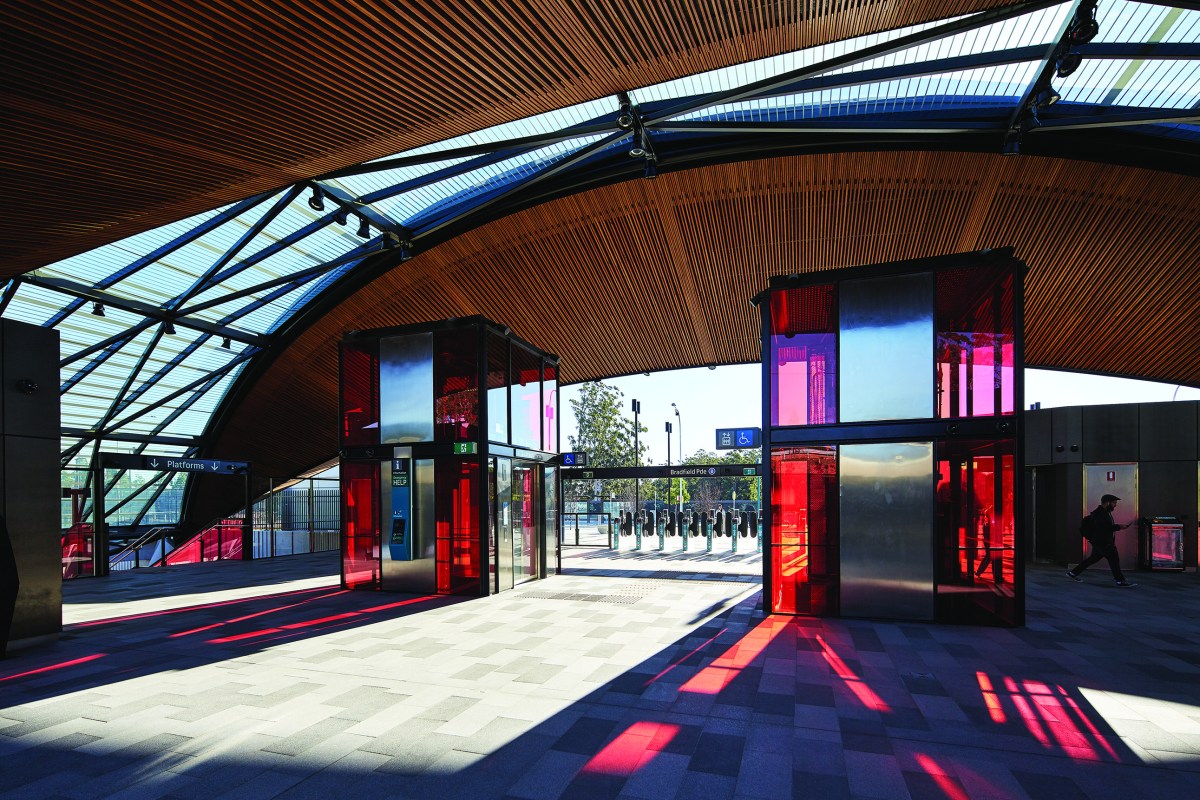New South Wales is preparing for a new Sydney Metro line. And like all things planned with foresight, the result promises to be a richer experience. For artists, that will mean the commissioning of nine new public artworks.
Create NSW and Sydney Metro are calling for artists to register their interest to develop unique artworks for stations and precincts along the new Sydney Metro–Western Sydney Airport line.
It will service Greater Western Sydney and the new Western Sydney International (Nancy-Bird Walton) Airport, and will become the transport spine for the Western Parkland City’s growth for generations to come.
This idea of embedding art in stations is not a new concept; in fact, public art within transport hubs has become a global phenomenon, with many of these artworks becoming destinations in themselves.
We want those stations to be pleasant places to come to, and we know public art brings places to life and engages people.
Kati Westlake, Associate Director Design, Sydney Metro
‘It’s an exciting challenge, because we are delivering these stations to existing places like St. Mary’s, which has a really large, established population, but also to brand new urban centres, such as the Business Park and Western Sydney Aerotropolis,’ Westlake continued.
To unite that narrative across the line, the theme ‘journeys and pathways’ has been chosen, which connects both to Aboriginal cultural narratives of place, but also more literally to the shared experience of travel.
‘They’re open enough that artists can bring some of themselves to that theme. But they are also strong enough to help coordinate the artworks at each of stations along the line and ensure they read as a series of related pieces,’ Westlake told ArtsHub.

What is being commissioned
Nine public artworks are being commissioned: a one line-wide concept artwork with six expressions, with a consistent materiality and form distinguishing each station; and eight stand-alone artworks for individual station entrances and public places, including along the Active Transport Link.
‘A number of the commissions take into account the NSW Government’s Connecting with Country Framework and aim to increase Aboriginal and Torres Strait Islander engagement and employment,’ added Westlake.
The line-wide project is seeking EOIs that have a collaborative team including Aboriginal artists from the Sydney basin area, as well as senior experienced public artists. Two other projects are specific to Aboriginal and Torres Strait Islander artists.
‘There are considerable technical and functional parameters to be met in station artworks. They have to be really robust, created to last for many years and withstand a whole lot of cleaning machines, people, and daily wear. Safety is also a key concern for station design and can impact how works can be installed and maintained.
‘And because the artworks are part of the station building, there’s also engineering assurance that has to occur. A lot of what we do is making the addressing of these aspects a bit easier for artists by supporting and creating an informed and integrated framework,’ she added.
Westlake makes the point that the artworks need to hold their space visually, in competition with a lot of signage and information.
‘Stations are very big environments, visually and functionally. Their main goal is to get people down onto trains quickly and easily, and our station commissions can’t interfere with that process.
‘It’s important that the artworks read on a number of levels, so they might have an overall initial impression, as well as details and subtle layers that people can read and notice at other times.’
Westlake told ArtsHub ‘the EOI calls for engaging and skilled artists who have the ability to work as part of a specialist team with architects and engineers. Collaboration is crucial at Sydney Metro.’
She concluded of the exciting opportunity: ‘Art can elevate the customer experience. When people feel engaged, they feel that someone has cared enough to create that art and put it in the station – to put human thoughts and feelings in that journey pathway – and that is really important.’

Bibles and Bullets, Fiona Foley. 2020. Commissioned by City of Sydney. Image John Gollings
In summary: the need to know
- EOIs are now open for 2D works, relief and freestanding sculptures.
- 14 September from1.00 – 2.00pm: EOI online information session.
- 31 October 2022, 5pm: EOI closes.
- Public art budgets are planned to range between $600,000 and $1,800,000 for each of the nine commissions.
- Budgets will include artists; artist team fees and all costs associated with design and technical development, prototypes, materials, approvals, fabrication, and installation.
- Artists must be an Australian citizen or permanent resident.
Learn more about Sydney Metro.





